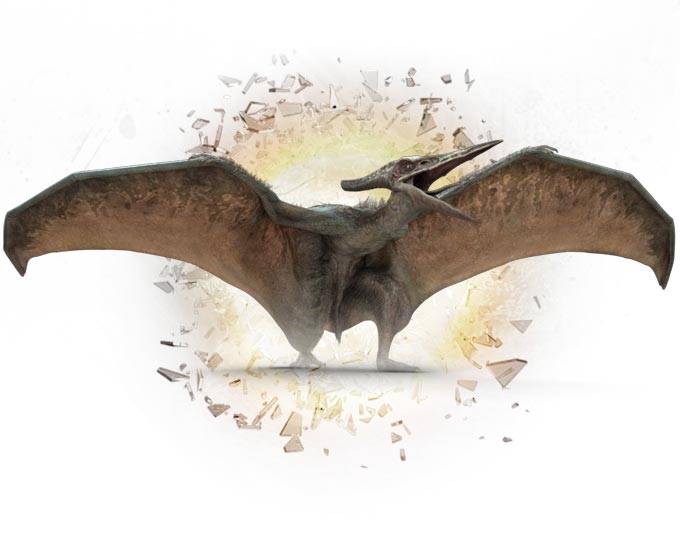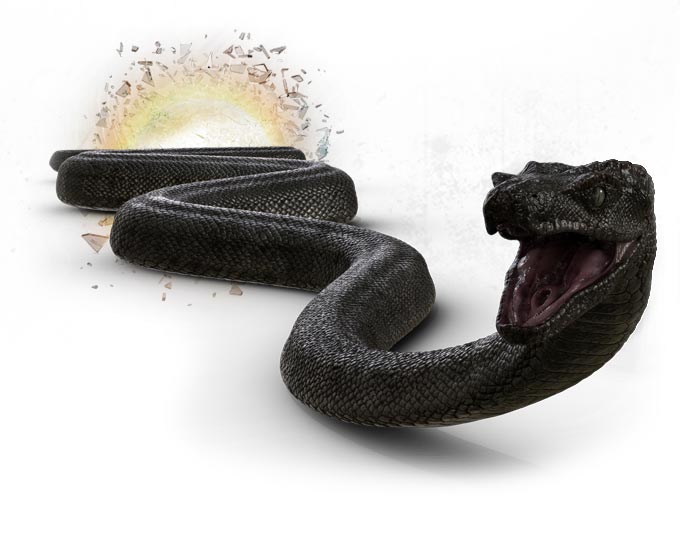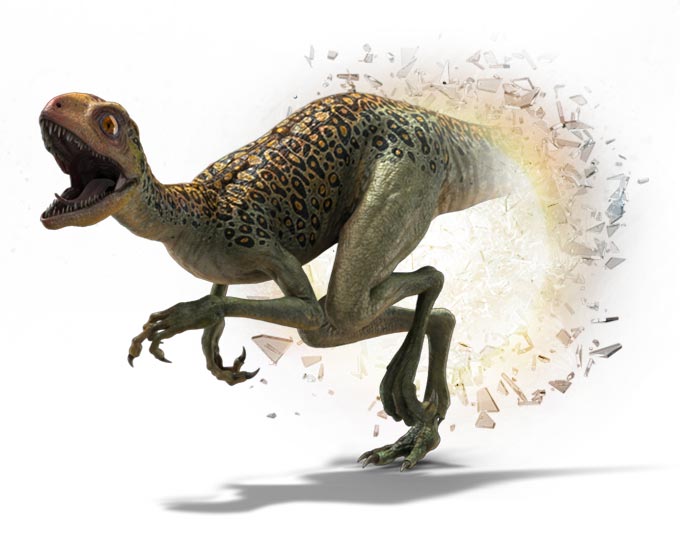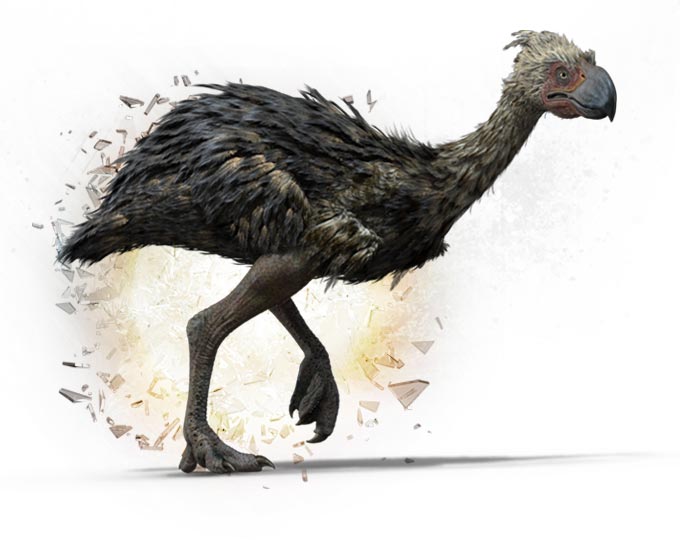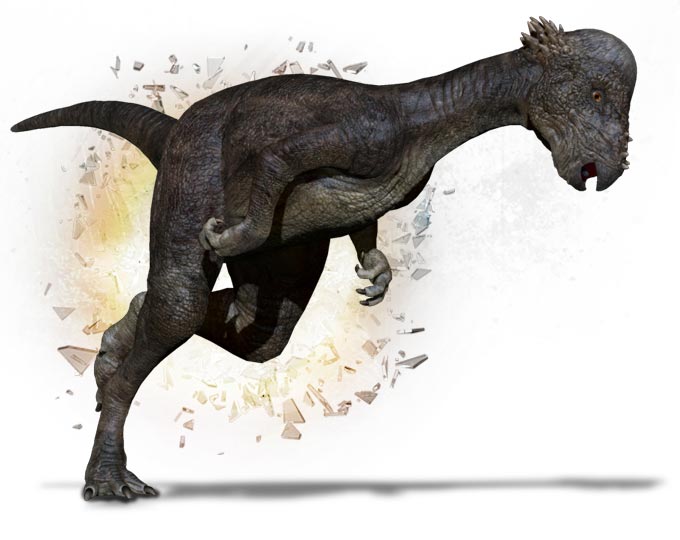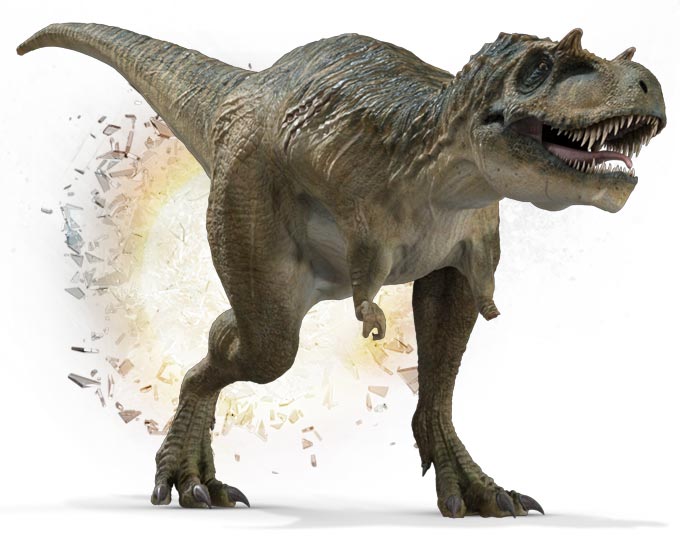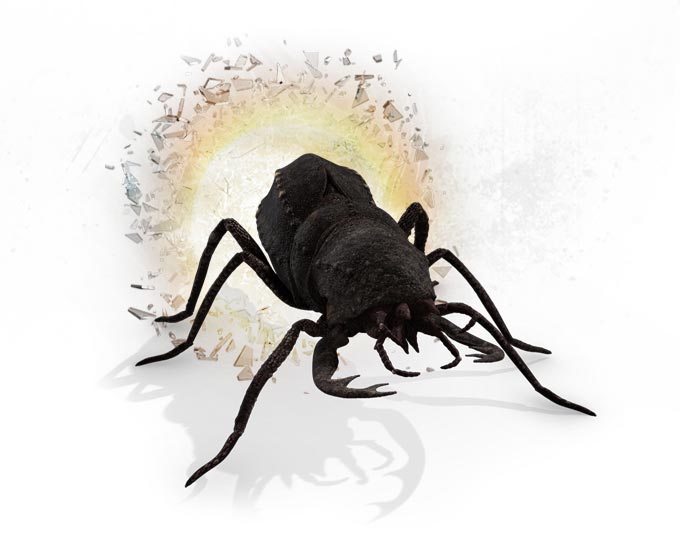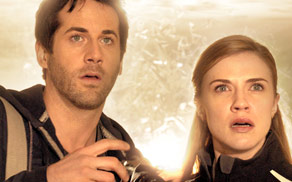Raptor
Raptors varied in size from less then a metre to over seven or eight metres, but regardless of stature, these predators pack a punch. Agile and athletic, the carnivorous dinosaurs were most likely pack hunters who stalked their prey and killed with razor-sharp claws. The term ‘raptor’ loosely refers to a group of dinosaurs; the ones you see in Episode 101 of Primeval: New World are actually based on the late-cretaceous dromaeosaur.
Lived: 167 – 65 million years ago
From: Asia
Eats: You. For breakfast
Pteranodon
Graceful in the sky, these aerial giants are (CLUMSY) on land – but fortunately, they could soar effortlessly for hours on end. First discovered in 1870, their fossilized remains have been found on many continents and as far as 160 km from the coast – meaning they probably flew great distances and only landed to mate, nest or rest.
Lived: 120-65 million years ago
From: North America, South America, Europe, Asia
Eats: Fish
Titanoboa
The length of a school bus and weighing as much as 20 adult humans, the titanoboa is nearly twice the size of an anaconda. Discovered in a Columbian mine, not much is known about this giant snake, who was around in the period following dinosaur extinction.
Lived: 60 – 58 million years ago
From: South America
Eats: Crocodiles, turtles and fish
Lycaenops
These Permian predators resembled a scaled-down wolf – their legs were longer and their build more slender than many reptiles. Its pointed canine teeth were ideal for chomping on flesh and it could outrun most other vertebrates. They are part of a small group of animals thought to be the missing link between reptiles and mammals; it’s assumed they had both scales and hair.
Lived: 280 million years ago
From: South Africa
Eats: Small reptiles
Daemonosaurus
(demon lizard!)
An early species of dinosaur with a fearsome set of teeth, these guys were a deadly knee-high combination of muscle, tooth and claw. Agile and fast, they hunted in packs and could bring down much larger prey by attacking legs then swarming in like piranhas. Don’t underestimate their seemingly mischievous nature; they lived up to their name.
Lived: 200 million years ago
From: North America
Eats: Bigger dinosaurs
Terror Bird
(titanis walleri)
These vicious carnivores used their heavy beaks to batter obstacles and tear flesh, and left little of their victims intact. Flightless birds, these 8-foot-tall predators could none the less run 65 km/h – making them pretty difficult to take down.
Lived: 5 – 2 million years ago
From: North America
Eats: Meat. And bones. And organs.
Pachycephalo-
saurus
Its name means “thick-headed lizard” and that isn’t a slight. These bipedal omnivores are famous for large, bony domes atop their skulls – up to 25 cm thick. They had sharp, serrated teeth and could be up to 4.5 metres in length.
Lived: 65 million years ago
From: North America
Eats: A little bit of everything
Albertosaurus
A tyrannosaurid theropod, the Albertosaurus was probably the top of its local food chain. Though smaller than its famous cousin, the T-rex, adults still measured in at an impressive 9 metres in length. These ferocious predators were quick-footed and boasted deadly jaws with 60+ teeth.
Lived: 70 millions years ago
From: North America (Alberta, Canada)
Eats: Whatever it wants
Jurassic
Flying Beetle
We took a little liberty with this one. Beetles didn’t evolve until the cretaceous period and insects were at their largest in the carboniferous – but these eight-footers are larger than anything on the fossil record. The beetles in episode 103 have bad eyesight and thus long antennae, and they’re carnivorous.
Lived: Didn’t
From: ?
Eats: Pilots













